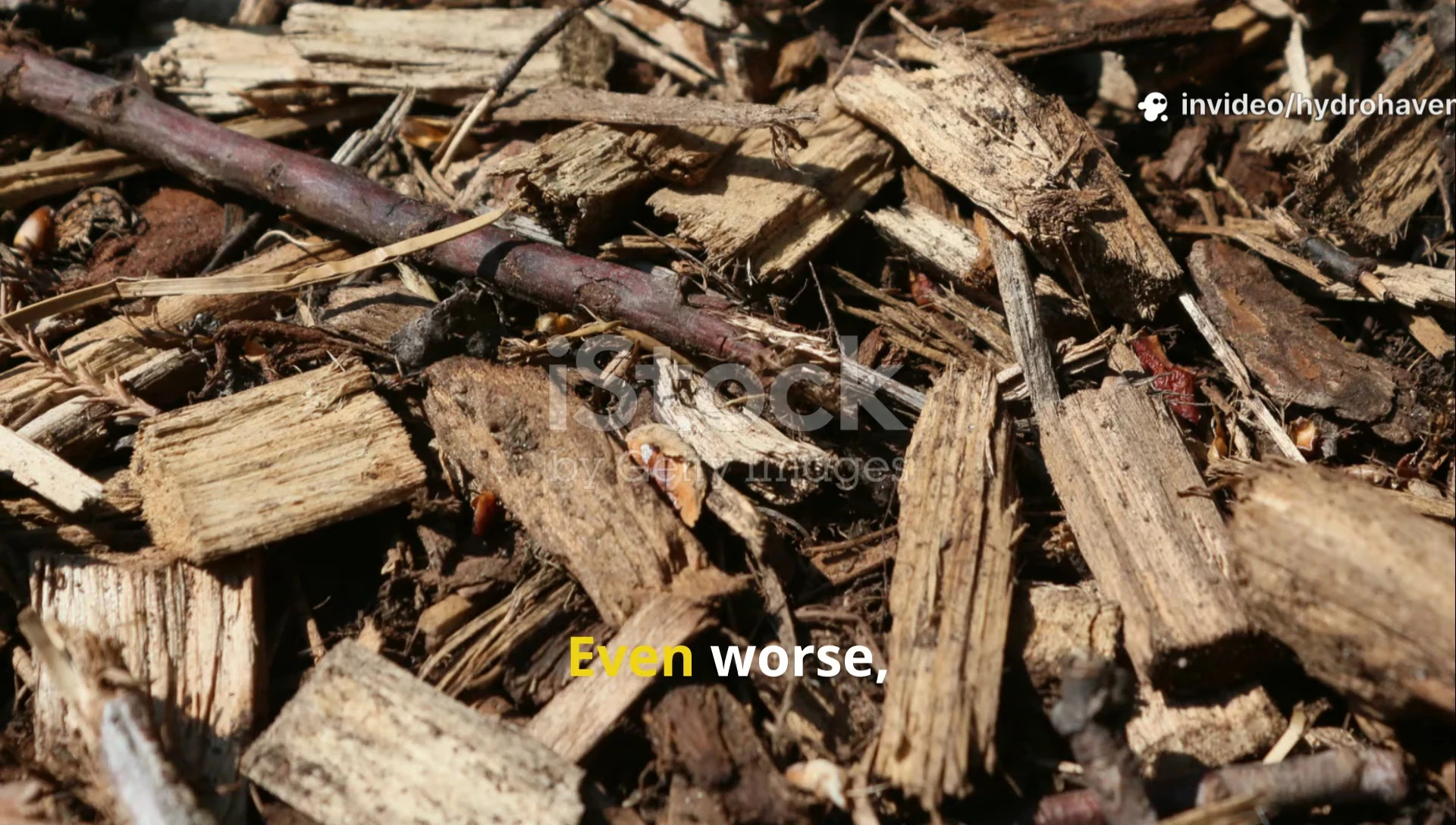Tired of struggling with lackluster plant growth and depleted soil? Many gardeners rely on wood chips for weed control, but this popular mulch can actually hinder plant health by stealing vital nitrogen from the soil. The result is stunted growth, pale leaves, and an overall unhealthy garden. There's a better, more sustainable, and completely free alternative waiting for you.This article reveals the secret to lush, thriving gardens without the expense or drawbacks of wood chips. Discover how readily available grass clippings and fallen leaves offer a superior, nutrient-rich mulch that revitalizes your soil and promotes vibrant plant growth. Learn how to effectively use this natural material to improve soil structure, moisture retention, and weed suppression, all while contributing to a more sustainable and eco-friendly gardening practice. Prepare to transform your garden with this simple, yet powerful, technique.
Pros And Cons
- Decomposes quickly, feeding the soil with nitrogen and carbon.
- Creates a good environment for microbial activity.
- Doesn't form impenetrable mats, allowing for air flow and preventing compaction.
- Invites worms, bacteria, and fungi to improve soil health.
- Forms a soft layer of humus, improving soil structure and moisture retention.
- Suppresses weeds by blocking light and slowing seed germination.
- Adds organic matter year after year, building soil fertility without tilling.
- Is free or low-cost, utilizing readily available yard waste.
- Reduces landfill waste.
- May have an unpleasant smell while decomposing.
- May mat if not properly applied (too wet or thick).
- Needs to be applied carefully around plant stems to avoid trapping moisture.
- Free and abundant.
- Suppresses weeds effectively.
- Rich in carbon but low in nitrogen, leading to nitrogen depletion in the soil.
- Forms dense mats that restrict air flow and moisture.
- Creates a haven for pests and mold.
- Decomposes slowly, taking months or years.
- Leaves soil cold, compacted, and biologically inactive.
Read more: 10 Best Commercial Charcoal Grills: A Buyer's Guide
The Problem with Wood Chips
Wood chips, a gardener's favorite for their weed-suppressing properties, present a hidden challenge. Fresh wood chips are high in carbon but low in nitrogen, creating an imbalance during decomposition. Microbes break down the wood, stealing nitrogen from the surrounding soil, leaving your plants nitrogen-deficient and stunted.

This nitrogen depletion manifests in stunted plant growth, pale leaves, and weak root systems. Furthermore, wood chips create dense mats, restricting airflow and moisture, leading to pest infestations (like slugs) and fungal growth. The soil beneath remains cold, compacted, and biologically inactive.

The result? Despite your efforts, your soil may remain unimproved, with unpleasant odors, fungus blooms, and visible signs of nitrogen deficiency. It's a frustrating situation that many gardeners encounter.

The Benefits of Grass Clippings and Leaves
Shredded grass clippings and fallen leaves offer a superior alternative. These readily available, free materials decompose quickly, especially when chopped. Grass clippings are nitrogen-rich, while leaves provide carbon, creating a balanced environment for microbial activity.

This mulch breaks down almost immediately, nourishing the soil instead of depleting it. The small, soft particles don't form impenetrable mats, allowing for good airflow and moisture retention. Worms, bacteria, and fungi thrive, transforming organic matter into humus.

The improved soil structure leads to better moisture retention, drainage, and a soft, crumbly texture. This creates an ideal environment for healthy root development and vibrant plant growth.

Application and Techniques
Apply fresh grass and leaves soon after mowing or raking, while slightly moist but not soggy. A 2-inch layer is sufficient. Mix in dry leaves or straw if clippings are very wet to improve aeration.

Leave a small gap around plant stems when mulching vegetables to prevent moisture buildup. If concerned about smell or matting, pre-dry clippings in the sun or alternate thin layers of grass and leaves.

Over time, you'll find the ideal balance for your climate and soil type. Many municipalities offer free leaf mulch during fall collection season – a truly sustainable choice.

Conclusion: The Power of Natural Mulch
Switching from wood chips to shredded grass and leaves resulted in a dramatic improvement in soil health. The soil darkened, worms appeared, and plants flourished. This natural mulch provides a zero-cost, zero-waste approach to building fertile topsoil.

It suppresses weeds, improves moisture retention and drainage, and promotes a thriving microbial community. This method mimics the natural processes of forest soil formation, enhancing long-term soil fertility.

The benefits are undeniable: improved soil health, reduced watering needs, vibrant plants, and a sustainable gardening practice. This free mulch method is a game-changer for any gardener seeking healthy, thriving plants.

